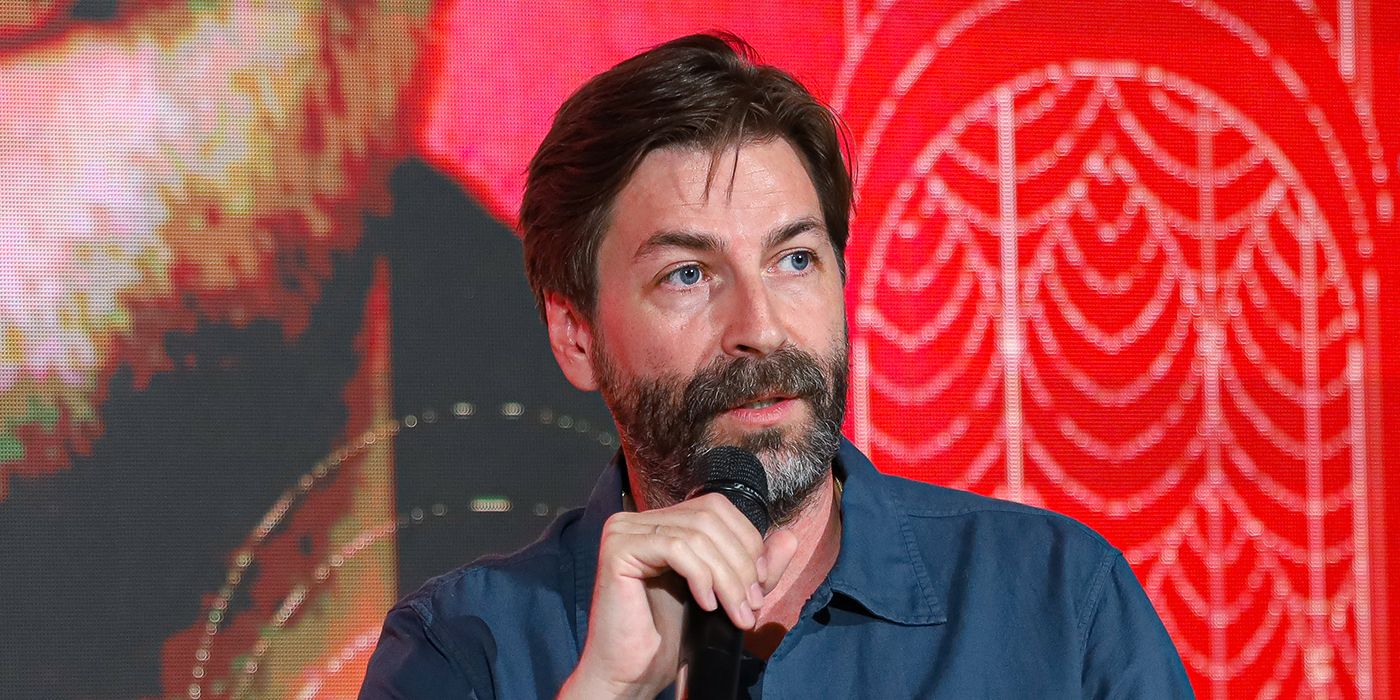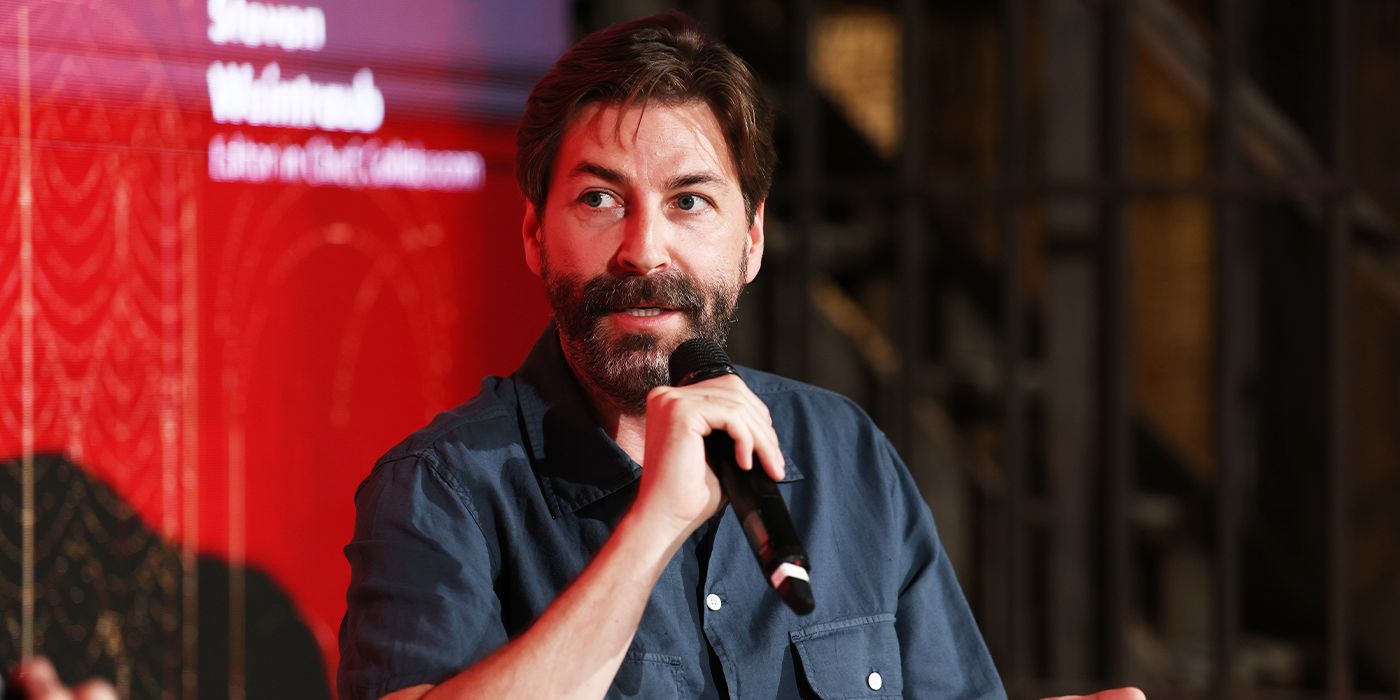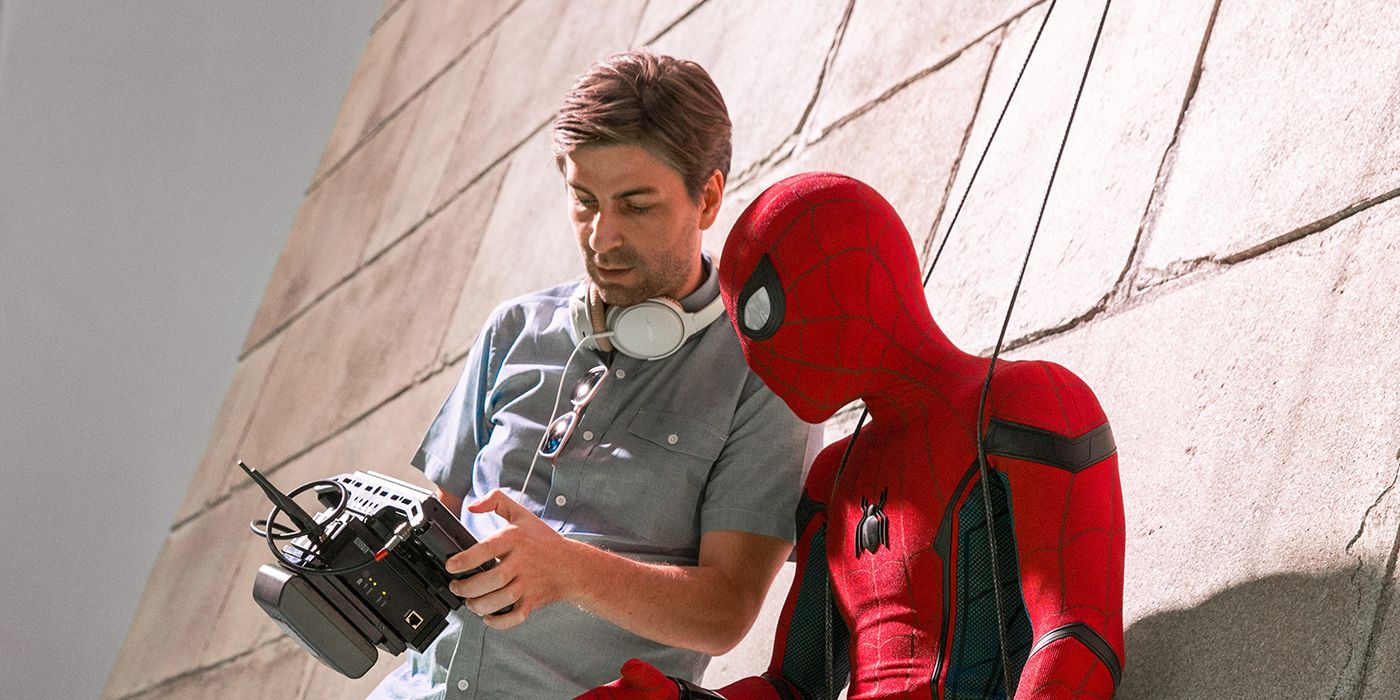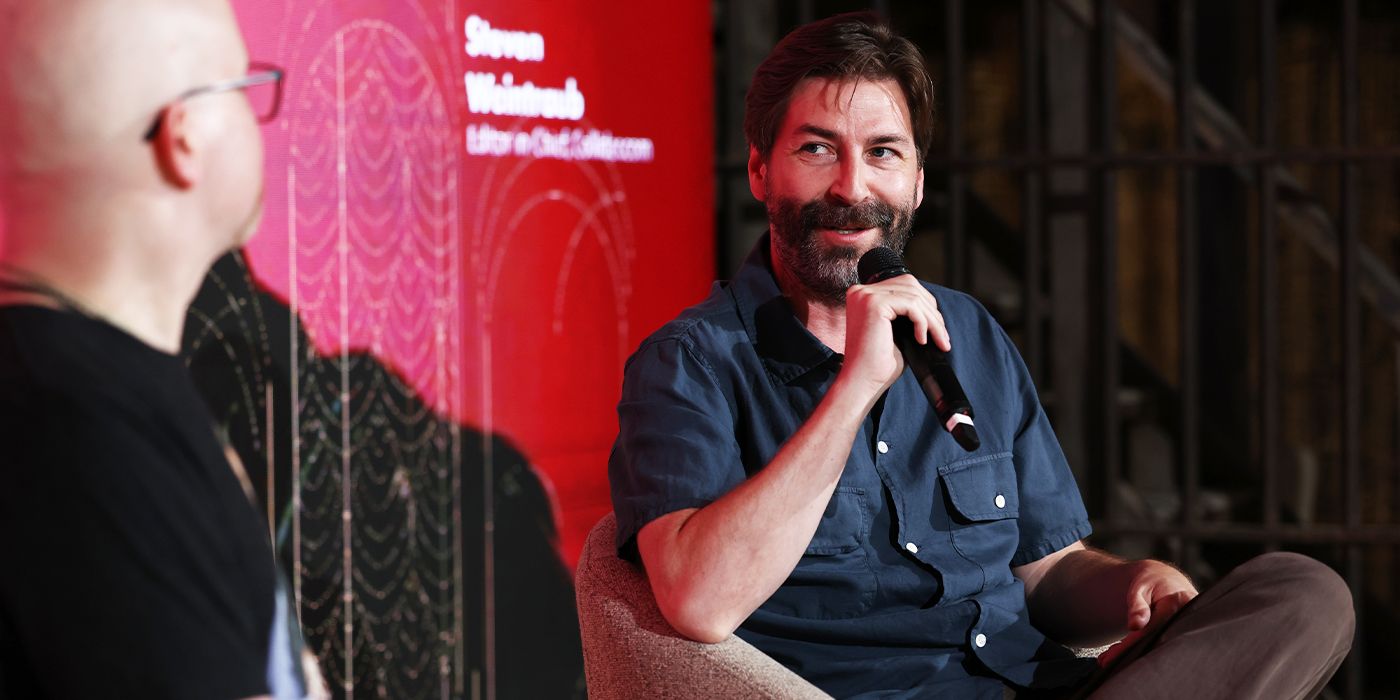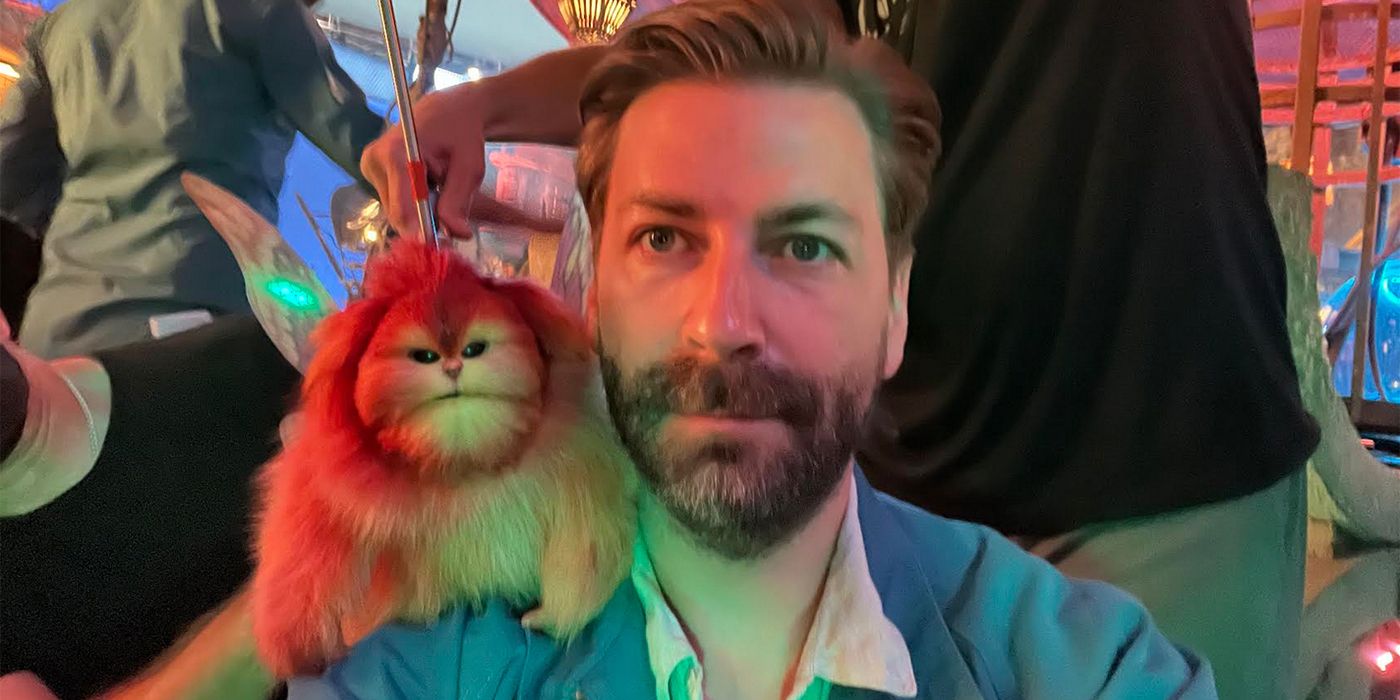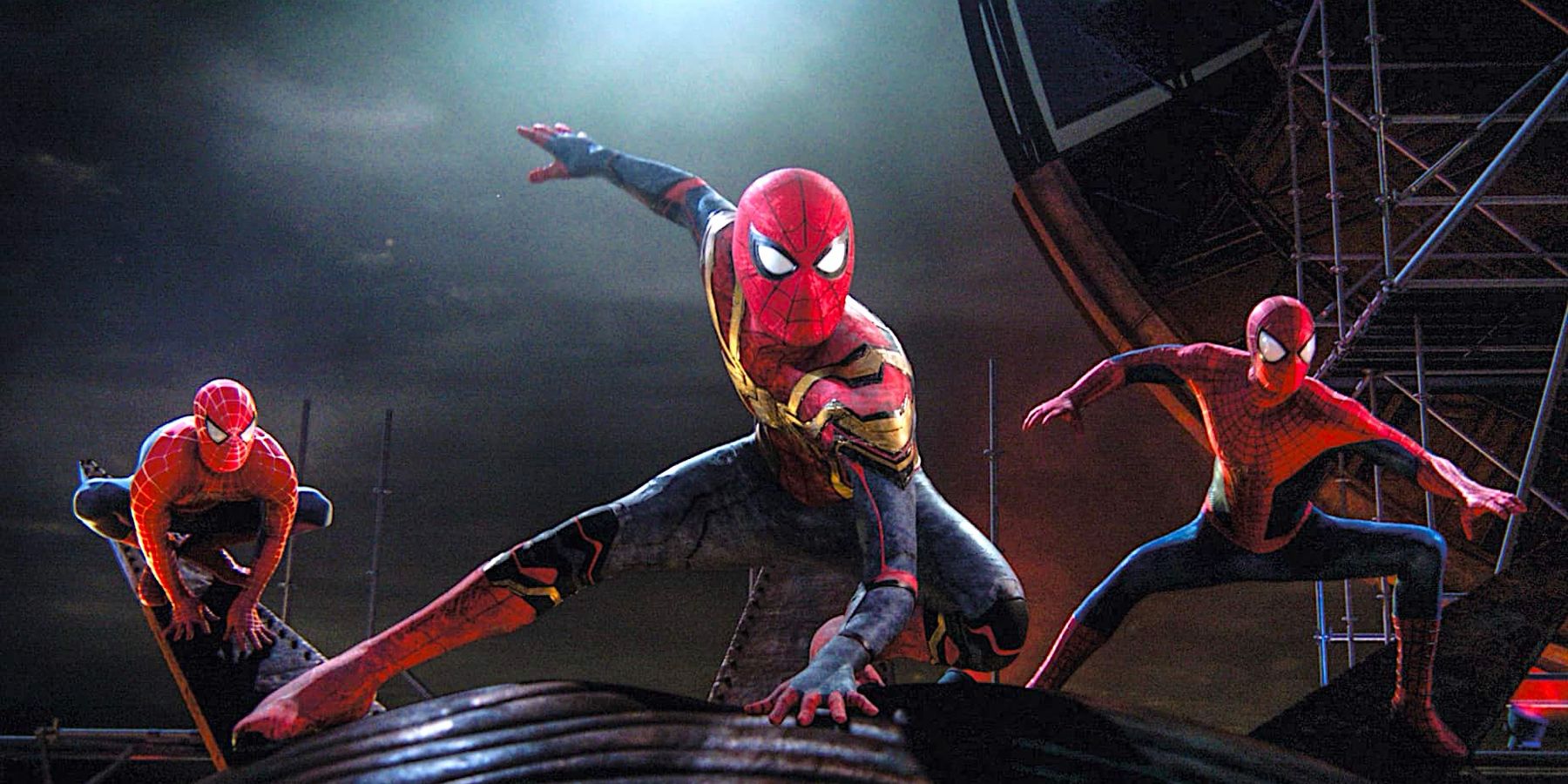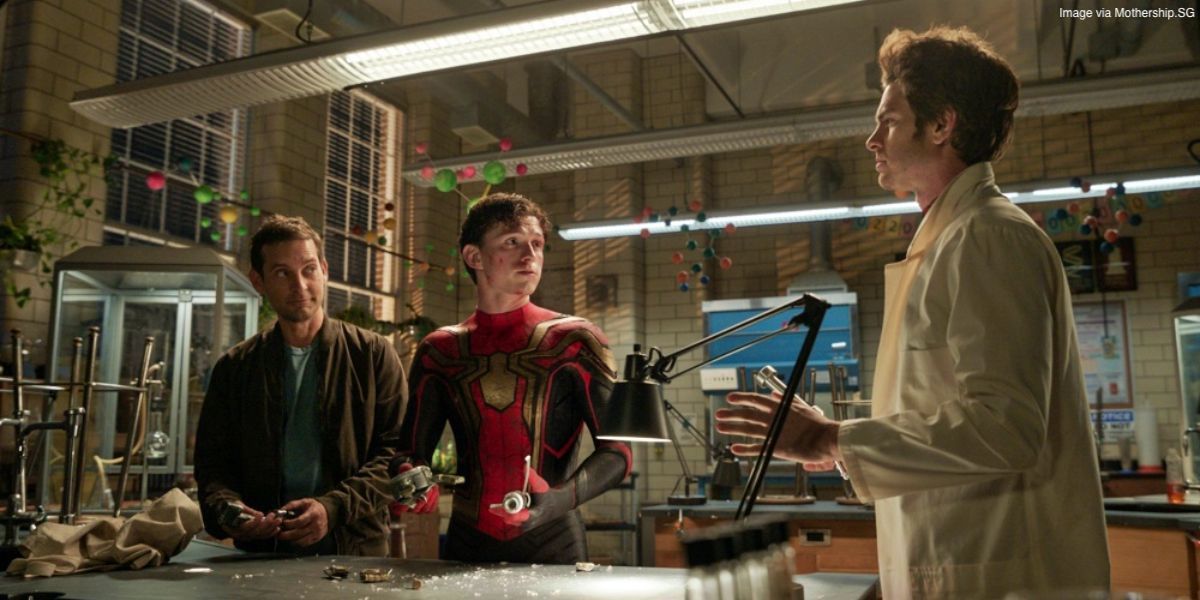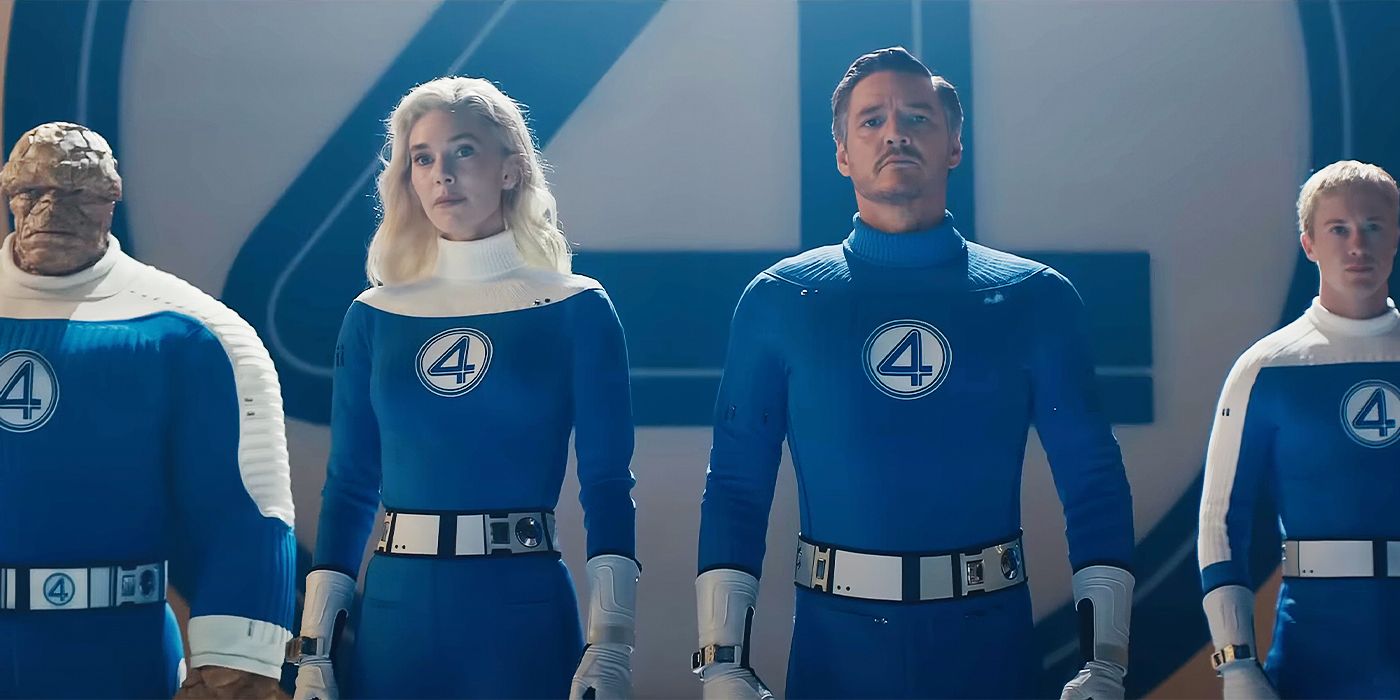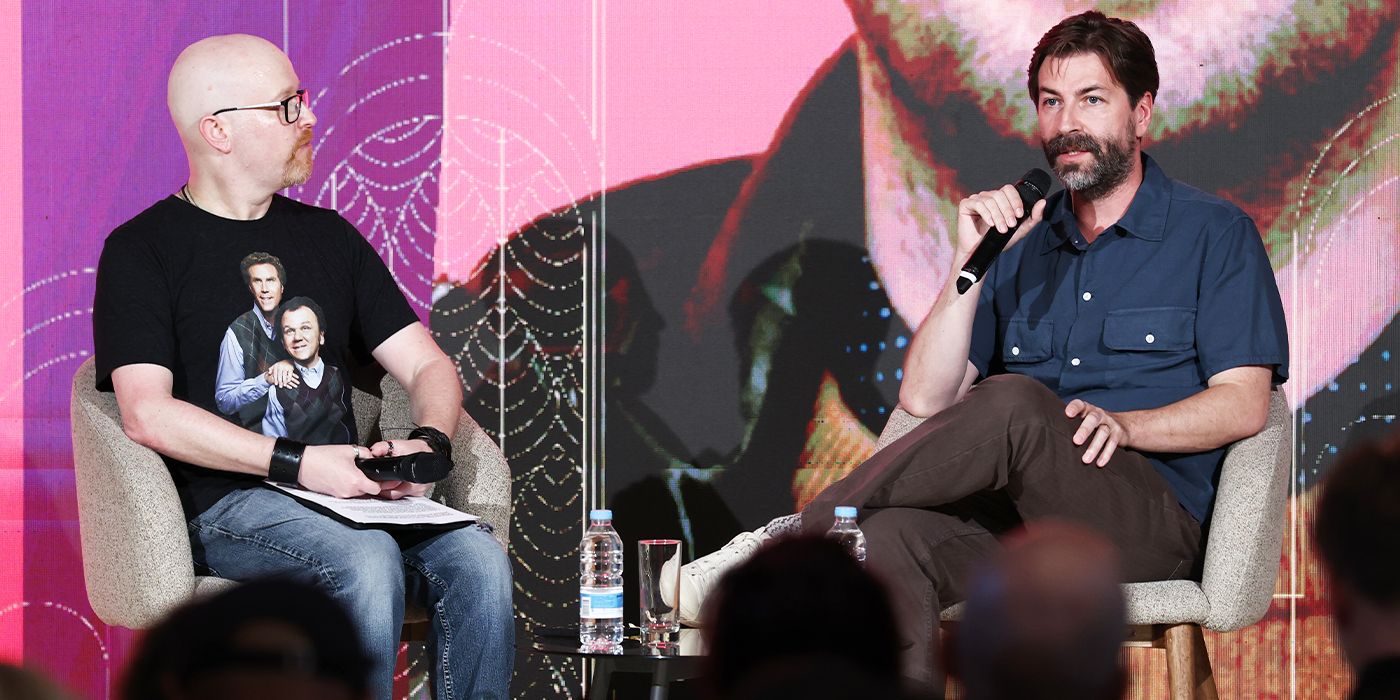Summary
- Collider’s Steve Weintraub moderates “Storytelling with Jon Watts” at the 2025 Mediterrane Film Festival in Malta.
- During the panel, Watts discusses his experiences and expertise in storytelling during a masterclass, emphasizing emotional storytelling.
- Watts talks about directing the Spider-Man trilogy, his involvement with Final Destination Bloodlines, Star Wars: Skeleton Crew, and shares behind-the-scenes stories from his career.
In 2017, the world got to see what filmmaker Jon Watts could do behind the lens on a budget of nearly $200 million with Spider-Man: Homecoming. Before going on to helm the trilogy for Sony and Marvel Studios, however, the writer, director, and producer captured the attention of audiences with his two indie features, Clown and Cop Car. So, how did an indie filmmaker land a mega blockbuster that would launch his career?
At this year’s Mediterrane Film Festival in Malta, Collider’s Steve Weintraub moderated a masterclass with Watts for storytelling in Hollywood. In addition to discussing Watt’s expanding reach throughout the industry, attendees were treated to an inside look at crafting emotionally complex stories that deliver memorable characters without sacrificing spectacle.
During the conversation, Watts shares behind-the-scenes stories from the making of his Spider-Man trilogy, particularly that iconic scene with Tom Holland, Tobey Maguire, and Andrew Garfield, and how he got his foot in the door for a major franchise. Watts also discusses working on the Disney+ series Star Wars: Skeleton Crew with his best friend and creative partner, Christopher Ford, how he got involved with one of this summer’s hottest horrors, Final Destination Bloodlines, his Apple TV+ star-studded drama Wolfs, with George Clooney and Brad Pitt, and what he’s got in the works (more Star Wars, perhaps?).
For all of this and why Watts stepped away from The Fantastic Four: First Steps, you can read the conversation below.
Jon Watts Dishes on the Ins and Outs of Hollywood Moviemaking
“This idea that it’s this big, huge machine that people get plugged into, and then they’re ripped apart, I don’t think that’s necessarily true. At least not for me.”
COLLIDER: What do you think would surprise people to learn about being a director in Hollywood?
JON WATTS: That it’s not the machine that people make it out to be. I think there’s this idea that you come in as a director, and there are all these producers and these people behind the scenes pulling the strings that want to make you do things and force you to do things. I haven’t had that experience at all. At least personally, I find that my experience has been a really welcoming and creative place where people are genuinely looking to the director to guide the project and to write and to have ideas, and to craft the story. So, this idea that it’s this big, huge machine that people get plugged into, and then they’re ripped apart, I don’t think that’s necessarily true. At least not for me.
If you could make one change about the way Hollywood operates in terms of making movies and television shows, what would you want to change?
WATTS: I wish there were more original movies in theaters. Original movies in, like, a medium scale. We’ve built this system where you have these giant tentpole movies that are so expensive that people feel like they have to be based on something that you already recognize. They can’t be too risky. I think that’s created a hole in the middle of interesting, new movies. Like, we’re still ripping off Groundhog Day. Let’s make a new Groundhog Day. Let’s make new medium-sized ideas that get everyone excited about going to the movies again.
I think we all agree with that, but then you have something like Elio by Pixar, which I thought was really well done, and it made no money. All that’s going to do is tell Pixar and Disney, “Make another Toy Story.”
WATTS: You do have the big things that you rely on to make sure that you make enough money, but at some point, you’re going to run out of things to remake, and then you’re just regurgitating the same stuff over and over again. Also, I haven’t seen it. It looks really good. Maybe it will just take some time. That’s the other thing that I think is stressful in Hollywood right now is things have to do great immediately. They’re not given the space to live in theaters and grow and build an audience over time. Used to, movies would start lower and then slowly accumulate over time. Now, if it isn’t a huge hit immediately, people will start talking about how it’s a huge flop, and that’s not necessarily true.
I completely agree with you, but I ultimately think that when you’re spending a hundred-something million dollars on a movie and the movie makes $30 million, even if the movie’s amazing, and even if it does find success over time, it’s still about the budgets.
WATTS: That’s why I’m saying mid-level movies. Make a movie for $30 million or $40 million, and then if it makes $50 million, you made $10 million. In any other business, if you made $10 million, people would be like, “Oh, that’s great.”
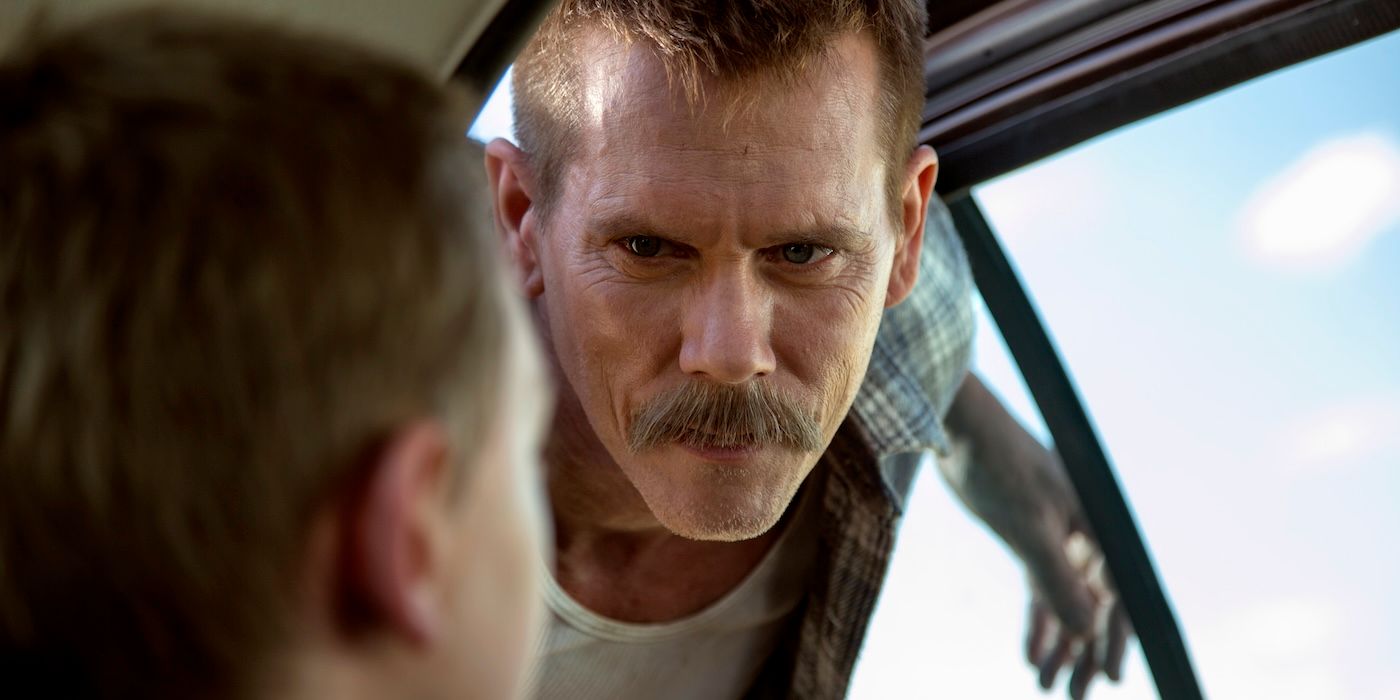
Related
Before the Spider-Man Films, Director Jon Watts’ Debut Was a Tense Thriller Starring Kevin Bacon
This film solidified Watts’ skills in building tension and snagging A-list actors.
How concerned are you about A.I. in the next year, and then in five years, and in 10 years?
WATTS: [Laughs] This is a test. I feel like I’m being grilled. I’m being interrogated in a prison about the future of Hollywood. I don’t want to wade into it too deeply, but I think the first thing that people should think about when it comes to AI is that they should stop calling everything AI. There are so many facets to this conversation. It feels like back when people would talk about “the internet,” and they were like, “How is the internet going to change everything? How is the World Wide Web going to affect politics?” AI is a very complex thing that can be used in very different ways. I think the first thing everyone should do is be a lot more educated when they talk about it so it doesn’t get oversimplified. Personally, I don’t mess around with it. I like the human beings that I work with, and I’m not interested in replacing any of them. I look forward to working with human beings. So, right now, I’m personally learning about it, but I’m staying away from using it.
One of the reasons why I think your work is so effective is that you always have characters that the audience cares about. Can you share a little bit about how you like to write and create characters to make sure that each one has something that the audience is drawn into?
WATTS: I feel like everyone thinks of themselves as the main character in their story, so when I’m developing a character, even if it’s a really small side character, I try to think about what the movie would be if they were the star. I try to flesh out everyone as much as I possibly can, and I really try to put myself in the shoes of all of the characters that I’m writing so that you can keep everyone from being one-dimensional. The thing that makes characters really memorable is when they feel real and when they feel like they connect to something in your life, so I always try to take a little bit of my personal experience and find a way to put it in every character, so that I can relate to them so that I can be writing from places of humanity. Especially the background.
How Jon Watts Went From Indies to Marvel Blockbusters
“I just bothered them so much. I was so irritating.”
Early in your career, you made Clown and Cop Car, which are real small indies. Then, you were hired by Marvel to helm Spider-Man: Homecoming. What kind of blackmail material do you have on [Kevin] Feige and the executives to go from these tiny movies to this massive production?
WATTS: What would it even be? Everyone at Marvel is so nice. It would be them all dressed as, like, DC characters at some secret costume party. I honestly have no idea how I got the job. I still don’t, really. And I didn’t think I was going to get it at any point in the process. I thought, at the very least, this would be a chance to see what it feels like to pitch on a giant Hollywood movie that you’ll never get. I was just really enthusiastic about it, and I really had an idea. I really had a strong take from the very beginning about what I wanted the movie to look like and feel like. I had been writing my own sort of coming-of-age story, so when I showed up to those first meetings, really the only direction I was given was that it’s high school Spider-Man. So, I watched basically every high school movie ever, unintentionally, leading up to that meeting. I was full of John Hughes and high school movies; I knew everything about every single one of them.
So, I think that initially got my foot in the door, and then I just bothered them so much. I was so irritating. I made a mood reel, I made a lookbook, I made a little camera test, trying ideas with Spidey sense. I storyboarded a couple of sequences. There was no script. There was nothing. But I was like, “Maybe this could be a cool sequence.” So, I just made my whole storyboard on my own, and submitted them. I sent them something, like, every week, and I think I just wore them down, and they were like, “Just give it to him to shut him up.” So, I think that’s how I got it.
How long did that go, from when you first went in to when you got hired?
WATTS: It was months. It was a months-long process because it’s Marvel. That’s the Marvel structure. But there’s also Amy Pascal as a producer, and then it’s also Sony, so that’s Tom Rothman and the entire Sony world. So I had to sort of work my way through various video game bosses, slowly working my way up to the very, very top. So, lots of meetings, lots of reading about it online, on, like, Deadline and Variety. Like, “These two people are in the front running!” I was never mentioned. It was like, “It’s down to five. It’s down to three. It’s down to two.” And then when I was announced, it was like a total surprise. People were like, “Who is that?”
What is it like going in to pitch that first time? Who were you meeting with, if you can remember? Do they have you essentially do homework when you walk in, or is it like a general meeting?
WATTS: The very first meeting was a general meeting because it was so secretive. They didn’t want to email any documents that would reveal anything that could be shared in a PDF, or something like that. My first meeting was an hour, with just Jeremy Latcham, who’s a Marvel executive, and maybe Eric Carroll, another Marvel executive. Just the two Marvel producers who were assigned to the project. The first one was like, they had a lot they didn’t want to do. Like, no supervillain lairs underground. Basically don’t repeat anything that has been in the previous movies, which is a good rule no matter what you’re doing. I had an initial brief, and then I went off and started creating materials. Then, every couple of weeks I’d come back and have a meeting, and there were more and more people in the room. By the end, it was like a giant conference room with Sony, with, like, Tom Rothman. It was very intense.
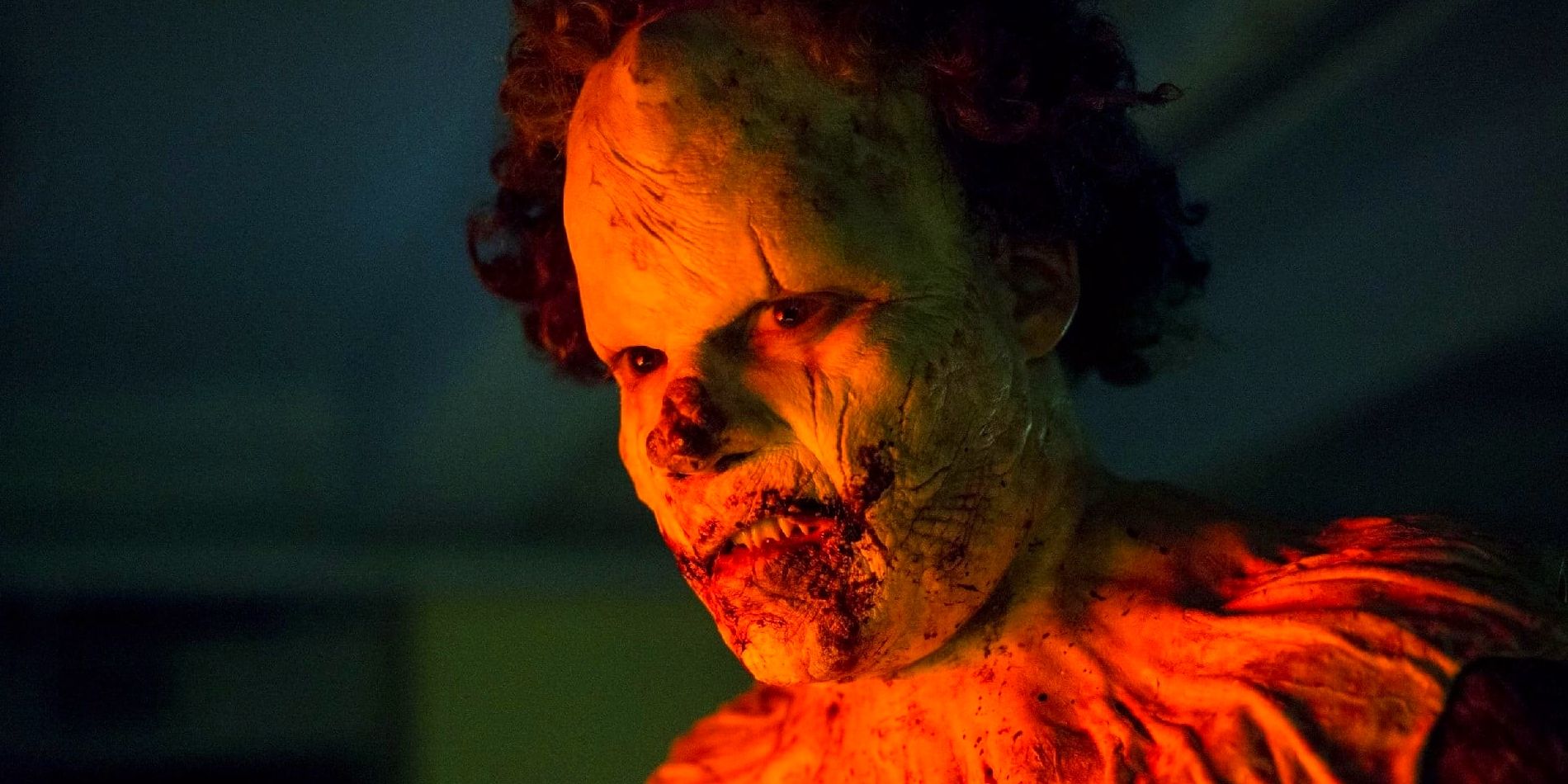
Related
I would imagine if you’re in a meeting and there’s that many people, including Rothman, you’re like, “I’m close. I am really close.”
WATTS: It’s good practice for when you’re on the set of a giant movie, and you’ve never made a giant movie before, where you just have 150 or 200 crew people who are all very experienced and have probably worked on a Spider-Man movie before sitting around with their arms crossed looking at you like, “Alright, what do we do?”
On the script for Homecoming, you are credited for writing it with Jonathan Goldstein and John Francis Daley. Were you guys writing it together? How did that happen? Or did you write a version, and they wrote a version?
WATTS: It was always a team effort. I really enjoyed the process. It’s more like a TV writers’ room. We’d meet every day, me, Goldstein, Daley, probably Jeremy Latcham, our producer, and we’d just come up with ideas and we would write stuff on notecards, and we’d pin it to the wall, and we’d slowly build the movie. What are the things we want to see? What would be cool? What are the main themes? Who are the characters? We were starting from scratch. We weren’t starting from scratch, but we were starting from all Spider-Man comics ever. So, there was a lot of sitting around, reading comics, drinking coffee, circling something, and pinning it to the wall. It was like a lot of just brainstorming as we figured out what the story was going to be.
Then, we got to work on it. They went off and wrote their drafts, which were really good and close, but at that point they had to leave to go work on another movie. They’re some great directors as well. So, they had to leave, and we still had things that we wanted to change. As you develop a movie, you get ideas. You go to locations, you come across something in the comics that you haven’t seen before. You just get an idea, and you’re like, “I want to put that in there.” So, they left, and because they left, I was like, “We can get some other people to do it, or just me and Chris Ford, my co-writer and best friend, can do it together.” So, we did the next draft, so that’s how we ended up credited.
When you are writing, not just for Spider-Man, but for everything, how much are you thinking about a budget when you’re actually writing, and how much are you thinking, “Let’s just put the best version we can on paper, and if we can’t do this thing because of the budget, we’ll just adjust?”
WATTS: We start with the best version. You start with whatever you want to do. There will be plenty of people along the way who will say, “We can’t afford that,” so I wait for them to say that. I don’t say it to myself. Not anymore. I used to.
Is there something that you wanted to do in those three Spider-Man movies that you were really trying to do, and ultimately budget got in the way?
WATTS: No. We got everything that we wanted to get out of those movies out of those movies. By the third one, I feel like I understood how the process worked, as well, so I knew where to spend the money at the right time to get what you want in the end. Big-budget movies like that that have a lot of VFX, you’re working on them and you’re writing them, and you’re rewriting them from the moment that you started writing it until the moment the movie comes out because you’re doing animation in post. Spider-Man has a mask, so you can change his dialogue, and you will probably change his dialogue up until the very end. It’s a really organic process, and it doesn’t just stop when you stop shooting.
One of the things that I think anyone who knows about the film industry is confused by is that so many movies are greenlit and go into production without a finished script, or they have a script that’s pretty good, but they have just no idea what the third act is going to be. Why do all these movies still happen when everybody knows this is not the way to make a movie great?
WATTS: First of all, I don’t even think you necessarily need a script to make a great movie. I think Mike Leigh has proven that you can make really incredible movies just off of outline.
But his budget is like $5 and a little duct tape. The Hollywood movies I’m talking about cost $100 or $200 million.
WATTS: I’ve never gone into a movie with a finished script. We’ve always had a script when we started shooting. There was always the feeling, like, “Oh, maybe this could be better, or maybe we’ll tweak this or change this.” Because once you start production on a giant movie like that, you’re shooting for 100 days. There’s maybe a scene in there that you’re not going to be shooting for months and months, and you want to use the time to try to make it as good as possible. I think you have to really know what the movie is about thematically before you start. I think that’s the bigger issue. People are like, “Oh, we know how it starts. We know these are the characters,” but they don’t know what it’s really about. You get a sense of the plot. You’re like, “Oh, it’s a superhero movie. There’s going to be a fight in the third act.” That’s lazy. I think you need to know thematically what kind of story you’re telling. So, even if the script isn’t 100% perfect by the time you go into production, you’ll find things, you’ll develop things.
The three Spider-Mans scene in No Way Home was definitely different from what we initially had scripted. You know what the real, short answer is to that question? No one gives enough time for meetings where they go through the script. It’s like we’re getting all the producers together. We’re going to sit down in a room and start to page turn, start reading. It’s like, “Oh, good, great. Good first act. Got some notes here.” You get to halfway through the script, and then everyone’s like, “I’ve got to go to another meeting.” So, people only ever read the first half of the script. It was like, “Wait! We should read all the way to the end to see if that works perfect, too.” So, I instituted a rule where we have to start in the middle of it and read to the end. So, we’d always get to the end and make sure that we like where the end is going, and then we go back and start at the beginning. You reread the first act way more than you end up rewriting the third act, and you should flip that. Because the third act is when it really has to work. The first act, you can get away with anything. The third act is when it really has to come together.
That’s good advice.
WATTS: Start in the middle and read to the end.
Jon Watts Explains the Magic Behind His Spider-Man Trilogy
“I really just wanted to immerse myself in Spider-Man.”
One of the things that the Spider-Man movies did was reach all audiences, from kids to parents who grew up reading Spider-Man. How did you pull that off?
WATTS: I always thought of it like I was working for Spider-Man, if that makes sense. I was like, “If I have one real boss in this whole process, it’s him, and I want to do him justice.” So, the first thing I did was I just read through the comics. There are so many comics, and there are so many offshoots of the comics, as well. So, like a lawyer preparing for a case, I really just wanted to immerse myself in Spider-Man. And even though we didn’t do, literally, things that are in the comics, we reinterpreted them and took the spirit of what is in lots of different parts of the comics. I really wanted to make sure a Spider-Man fan felt like we were doing it justice. Then, for the kid stuff, I feel like we connected with the kids because we brought together this incredible, amazing cast of the best kids in the world. We had Tom Holland and Zendaya, Tony Revolori and Jacob [Batalon]. They’re so great. I wanted it to really feel like an actual high school movie the kids can connect to and relate to. That’s a nice thing for you to say.
With your career, though, and the movies you’ve made, I’m sure on set there has been a day where it just wasn’t working. You thought the scene was perfect on the page, but you’re rehearsing it, and it is just not there. What do you do in that situation, and can you maybe mention a scene that you got to rework on the day to make it better?
WATTS: I won’t go to set if I don’t think it works. So, at least it works on my mom. I’ll push, because I’ll be like, “We haven’t figured some of those out yet, or we don’t have the right location, or something about this beat is wrong.” So, I’ve never had this thing on set where we have to stop. I’ve had moments where everyone was too tired to do the scene. Like, there’s a big emotional scene, and then we end up scheduling it on a Friday, and everyone is exhausted, and maybe one guy has the flu or something. I’ve been like, “We’re not shooting this scene today.” But I’ve never had something that didn’t work before. Sometimes you’ll rehearse it and you’ll be like, “This isn’t how it was in my head.”
That’s when it gets exciting, because you’re like, “Why isn’t this clicking as well as it did on the page or in my head?” And then you start figuring things out with the actor. You’re like, “Oh, it’s because the blocking is wrong. Oh, actually, let’s swap these lines. Oh, you shouldn’t say that. You don’t have to say that because we’re seeing you do this, so let’s cut it.” I try to keep a really dynamic experience on set. I’ve been given the freedom, which I’m realizing now is maybe kind of crazy, to just change stuff as we go. Like, “I don’t like this line. Cut this line.” You mix it up until it works, and then you’re like, “Okay, this feels right. Let’s shoot.” That’s the exciting part about directing. It’s like, “This isn’t working, but I’m going to fix it.”
Jon Watts Tapped Into His Inner 10-Year-Old for ‘Star Wars: Skeleton Crew’
The writer-director also discusses if he’s returning to Star Wars in the future.
I want to jump to Star Wars: Skeleton Crew. That’s another example of you and Chris Ford coming up with kid characters that are all fleshed out and three-dimensional, and you believe in all of them. Talk a little bit about writing Star Wars kids and how you guys pulled this off, because it really is a fun show.
WATTS: Chris Ford and I also wrote a movie together called Cop Car, which is about 10-year-old kids that steal a police car. When we were promoting that movie, we always said it was made by 10-year-olds for 10-year-olds because the two of us, when we get together, we’re basically just two 10-year-olds goofing around. So, to write a 10-year-old is easy for us because we’re dumb. To me, the trick to writing a kid is, personally, to remember what it felt like when you were a kid. You just have to try to go back in a time machine and remember how you felt and remember what you were wrong about. I think a lot of the humor of a kid character is what they don’t know, but what they think they know. The confidence of a 10-year-old explaining things to you is always very funny to me. I try to just remember what I thought and felt when I was 10, and I try to give it to the kids.
You get as close as you can in your writing, and then you have to be prepared to totally throw it out once you cast the kids because, suddenly, someone walks into the room and you’re like, “Oh, that’s the actor for the role. They’re not what you were thinking because you can’t make that happen. Then you rewrite everything to be in the voices of the actual kids, so it feels natural, like what they would say. The kids that we cast, when we would do rehearsals and things like that, were just constantly surprising me with just the most ridiculous things. Just their physicality and the things that they would do and say. So, we were always rewriting the scripts to just fold in real things that happened and actual behaviro from those kids, just because in the end, you want it to feel alive. You want it to feel real.
Do you think you are done with Star Wars? I ask this because you have a first look deal at Disney.
WATTS: I love Star Wars, and I would love to make more Star Wars. I can’t say anything more. We always get in trouble when we do these interviews. I always say something, and I get in trouble. Like, I probably shouldn’t have said that.
I’m gonna do a follow-up.
WATTS: You’re gonna get me in trouble.
I mean this so sincerely, the problem I see with Star Wars right now, in terms of movies, is that they announce all these different directors attached to all these different movies, and 99% do not happen. They just do these press releases, and they’re almost like April Fools press releases, like, “James Mangold is going to make a Star Wars movie!” All of it seems fake. So, are you a little bit apprehensive about possibly developing a Star Wars movie because none of them seem to happen?
WATTS: The two people that I worked with, Jon Favreau and Dave Filoni, as my main producers on Skeleton Crew, both made Star Wars movies. Well, Dave hasn’t made his yet. Favreau made his, so I know that’s for sure. So, it was like, “If we have something we want to make, we’re gonna make it.” I don’t know about the rest of the development process and the people who come in, and how large the Star Wars universe is, but at least in our little umbrella of Star Wars, our corner of the Star Wars sandbox, we were able to do things. Even if I worked on a Star Wars thing and it never happened, it’s really fun to just use your imagination and make up fun things that could happen in Star Wars.
Can you at least say whether it’s another season of Skeleton Crew?
WATTS: I cannot say exactly what it might be if it were even a thing.
I will leave it there. One of the things that you’ve done effectively in Skeleton Crew and in the Spider-Man movies is have these great action set pieces that move the characters forward. You’re furthering the story through action. Can you talk about writing that and making sure that it’s just not an action scene to be an action scene?
WATTS: Action scenes are so hard. They’re so complicated. They’re so challenging. They’re also so rewarding when you get it right. I look to James Cameron as kind of the best at it. You’re telling a character story, and you have to make sure it has a narrative reason for existing. You have to make sure it’s emotional, so you have to make sure that there are emotional stakes. But it’s also like a feat of engineering because you have to also make sure everyone knows, “Here’s where the helicopter is, and here’s where the car is. Here’s where the bomb is, and here’s how you defuse the bomb.” You have to tell all of those stories at the same time.
To be able to design and execute a really good action sequence is one of the most challenging things you can do, and I find that to be one of the most rewarding things, as well. It can be really hard to get a great performance and have a really big emotional scene, but if then you also have to explain how to defuse the bomb at the same time. That makes it 10 times harder. You never want to say, “We gotta get to the thing to put the thing in the thing!” But if you can tell an action story clearly without doing any of that, if you set it up beforehand so that you can just watch pure action play out, when directors pull that off, I find that to be just so rewarding and so impressive.
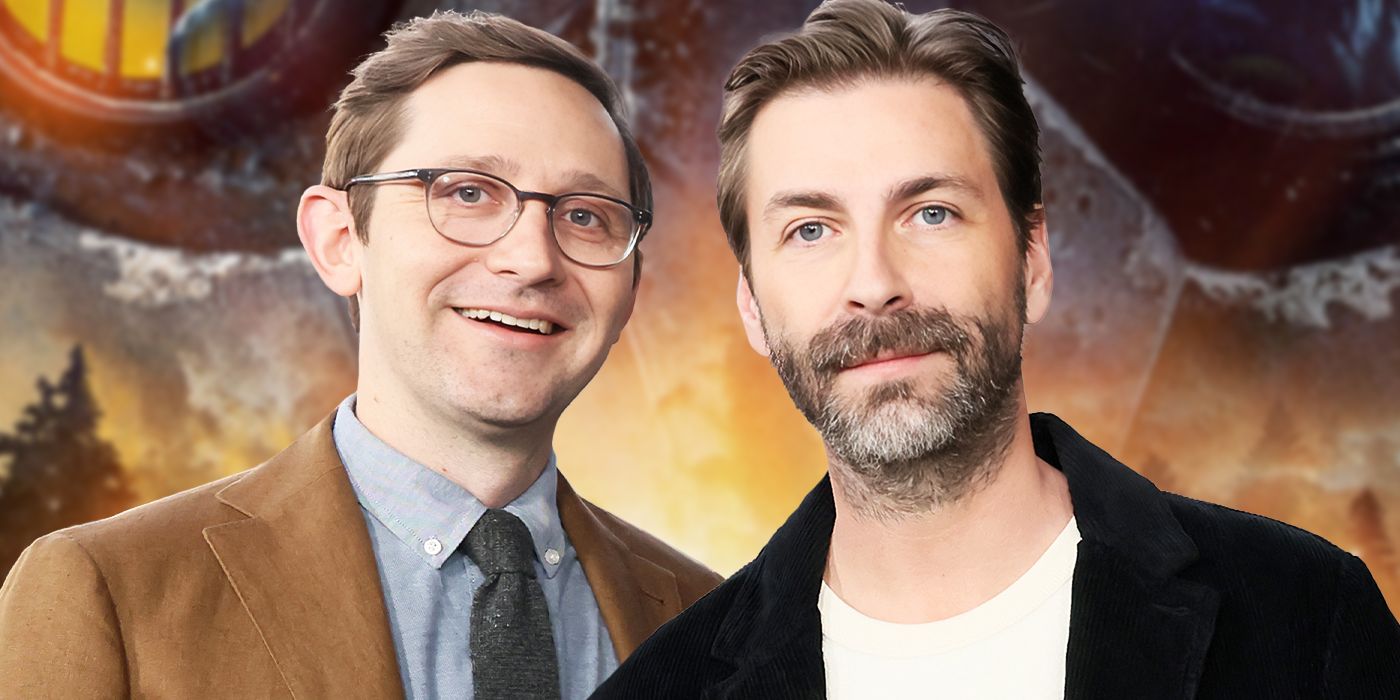
Related
We finally know when Jod was taken in by the Jedi and the answer may surprise you.
You mentioned how, when making a movie, a lot of people don’t usually start with the middle of the script and lead to the end. Early in your career, did you get any writing advice, or even recently, that you would love to share with people who want to be writers?
WATTS: Recently, there was an interview with John Swartzwelder, who’s a Simpsons writer, and the interviewer asked him the same question, and he said that he hates writing, but he loves rewriting. So, what he does is he writes the first draft as quickly as he possibly can, like in a day, with bad placehold dialogue, bad descriptions. He’s so non-precious about it because the next day he pretends like he’s — this is going to sound so stupid, but I love it — hired a shitty little elf to write the first draft. So when he sits down to look at it, he’s like, “Well, this is terrible. But what do I expect? I hired a shitty little elf to write it. Now I, the genius, can sit down, revise it, and make it good.”
I love that advice. It’s so easy to get so precious about your first draft of something. You have to throw that away. You just have to get it out. I hate the term “vomit draft.” That’s so gross. Like, I don’t want to think about that, like I threw up all over my laptop. That’s disgusting. But I like the shitty little elf metaphor because you get through it, you have it, it’s not good, but it will be good when you’re done. Just like we were talking about, how people never read to the end, and you never have enough time to get notes on the end of a script, same thing with writers. People rewrite the first act over and over and over again, and they never get to the end. Just get to the end. Just hire that shitty little elf. Get the draft out.
Jon Watts Breaks Down the Three-Spider-Man Scene From ‘No Way Home’
After showing the scene at the panel, Watts explains how the story evolved and the behind-the-scenes of bringing back Tobey Maguire and Andrew Garfield.
With this scene, as you continue watching, you’ll see that Tobey Maguire and Andrew Garfield are in the scene. This is how they enter the movie. You also have Electro. You have Doc Ock. You brought back all these other characters. One of the reasons why I love this movie and that scene, and why I think it resonated so much with fans, is because these characters were not inserted in the movie for fan service. All these characters move the plot forward. Talk about that.
WATTS: There was a time early in the story discussions when we knew that there was going to be some multiverse stuff going on in the larger Marvel world, and we hadn’t quite figured it out yet. But the thing that I was excited about was what if we brought the three Spider-Men together? How cool would that be? I always had this emotional reaction when you’d read about the movie, and people would be like, “Well, I like Andrew Garfield more, or I like Tobey Maguire more.” I always felt like there was an unspoken competition of, like, “Well, the [Sam] Raimi ones are the best. They’re never going to be as good as the Raimi ones.” I love all of the Spider-Man movies equally, like children. I thought, how cool would it be to tell a story, not about how one Spider-Man is better than the other one, but about how they all are Spider-Man? Somehow, if they can work together, they have this shared experience that can make them greater than they are just as individuals. That was the broad-stroke thematic idea that started the whole story process.
I remember there was one unspoken person who was like, “Whatever is happening in the movie in the third act, oh no, Peter Parker’s in trouble! Thwip, where did that web come from? Thwip, where did that web come from?” Reveal Tobey and Andrew. They swing in, they save the day, they leave.” I was like, “I won’t make that. I absolutely refuse to make that.” Just a character showing up for a cameo, being like, “Hello! Remember me? Okay, see you later.” I was like, “That’s not going to happen.”
So, with this broad-stroke idea about three versions of the same guy being able to learn to help each other in a really dark time, I thought that was enough of an emotional seat to build a story around. As you do that, you’re like “Well, why are they all here? What happened? How do you get to this situation?” That’s how we did it. We started there. It involves taking everyone seriously as a character, making sure it’s about something real and emotional, and then building it from there.
You have these two actors. This is one of those cat and mouse games where you’re trying to come up with the story and write it, but you also have to make sure Tobey and Andrew want to actually make this movie, and contracts have to get negotiated so they’ll actually be in the movie. How early on in the writing process were you sure these guys would come back and and what would you have done if one of them wanted just too much money?
WATTS: We weren’t going to go write the whole movie and then have them say, “Sorry, we don’t want to do it.” So, they agreed to do it based on me talking the way I’m talking now: “This is the kind of story I want to tell.” So, they were in. They were on board. Then we went and wrote it and developed it.
But circling back to your earlier question about being on a set and a scene just didn’t work, the scene of the three of them together, we had a really good, solid draft of it, but I wanted to rehearse it. So we got all the Spider-Men and Jacob and Zendaya all together on a Saturday and read through it. It was just such an amazing experience because here’s Tom Holland living through being Spider-Man with two other guys who had also lived through being Spider-Man in the movies and in the real world, and they just had so much depth and insight into what that feels like that what initially started as a rehearsal session became almost like a therapy session where everyone was talking about what this feels like. Then it became a rewriting session where we were like, “Oh, maybe that thing that we just talked about in the room, maybe that could be a part of the story. What if you said this, and what if you said that? What if we change this line?” As a team, [Chris] McKenna was hiding behind a set wall, listening to it and scribbling everything down as well, so that we could actually rewrite it properly. But we went through it and we workshopped the scene and made it into what it is now. We had a script. We were good. We’re just always trying to make it better.
How difficult was it keeping it all under wraps, and how frustrated were you when people started getting a whiff of this?
WATTS: It was in the middle of the pandemic, so it was actually much easier to keep things a secret because we couldn’t really leave the stage because that was the only place where we were approved to shoot. So, we shot so much of it on stages, and the world was so isolated. It was actually pretty easy to keep it a secret for us. In terms of leaks and things like that getting out, you do the best you can, but inevitably, something is going to be revealed.
What I found more compelling, the scene that you just saw, that’s when we first revealed the other two Spider-Men. There had been rumors that Tobey and Andrew were going to be in the movie, and this is while we’re shooting. It’s another example of how you can have a script that’s working, but that doesn’t mean it’s perfect. You can keep making it better. We were writing the script, and we were working on where we wanted to reveal the guys, and it always seemed like Peter’s going to be sad because Aunt May has just died, and that the portals are going to open, and the two Spider-Men are going to step out. It’s probably a rooftop somewhere. It’s all sort of hazy. You’re still trying to figure it out. Then I was on Reddit, and I was looking at people who had already made fan art of, “This is probably what it’s going to be like when the two Spider-Men get revealed.” It was on a rooftop. It was sad. Two Doctor Strange portals were open, and two Spider-Men were stepping out. I was like, “Well, we can’t do that. If that’s exactly what everyone thinks we’re going to do, we absolutely can’t do that.”
It reminds me of a Buster Keaton quote. He said, “I like the audience to think that they’ve outguessed me, and then I double-cross them.” I love that approach to storytelling, where you trust that the audience is smart, and they can see the moves, and they know and understand the genre, and they’re looking for you to surprise them. So, after I saw all this fan art, and I’ve decided, “We absolutely can’t do just exactly what everyone thinks we’re going to do,” I was like, “What does no one expect that we’re going to do? What’s something that no one’s going to see coming?” I was like, “Probably having the two Spider-Men appear at Ned’s Filipino grandma’s house in Queens. I don’t think anyone was doing fan art of that on Reddit.”
It made perfect sense in the story because it’s kind of the first time we leave Peter’s narrative. We don’t know what’s happened to him. We’re with Ned, we’re with MJ. They have to lie low. Where are they going to go? Ned’s grandma’s house. So, we built this whole scene around that. So as soon as you add his grandma, who is not an actor… It was the middle of the pandemic, so we had to find a lady and fly her from Hawaii to Atlanta to shoot all of this. So, as soon as you put her in that scene and change the location, now I feel like I’ve double-crossed the audience in the best way, where they’re seeing everything that they were hoping that they would see in a way that they were never expecting they were going to.
Why Jon Watts Stepped Away from ‘Fantastic Four’
“I am out of gas.”
After this Spider-Man movie, you got attached to Fantastic Four, and you eventually left the project. I think you said you left because you were superheroed out a little bit. Did you ever really say why you left?
WATT: I wasn’t superheroed out. We made No Way Home during the pandemic; we were one of the two or three movies that were shooting at that time, and it was so hard. We all remember how difficult that experience was. We were very fortunate to be working because so many people were out of work, but just the emotional strain of having to go through all those COVID protocols while trying to make something creative, while also trying to make sure that your cast and crew are safe — literally, people could die if you do things wrong. That, and the post-production process, as well, was very difficult because when you’re doing VFX, there’s a whole international component to it. We’re using vendors from all over the world, and the supply chain has been interrupted because of COVID. So, it was really hard to get effects done in a traditional way.
I had committed to Fantastic Four in between the second and third Spider-Man movies, so that had already been in process, but by the time No Way Home was done, I went in to get back into the story for Fantastic Four, and I said, “I am out of gas.” The COVID layer on top of the making a giant movie layer, I knew I didn’t have what it would have taken to make that movie great. I was just out of steam, so I needed to take some time to recover. Everyone at Marvel totally understood. They’d done it with me, as well, so they knew how hard and draining of an experience it had been. In the end, we were satisfied, but at some point, if you can’t do it at the level that you feel like you need to make it great, then it’s better to not do it. I can’t wait to see it, though.
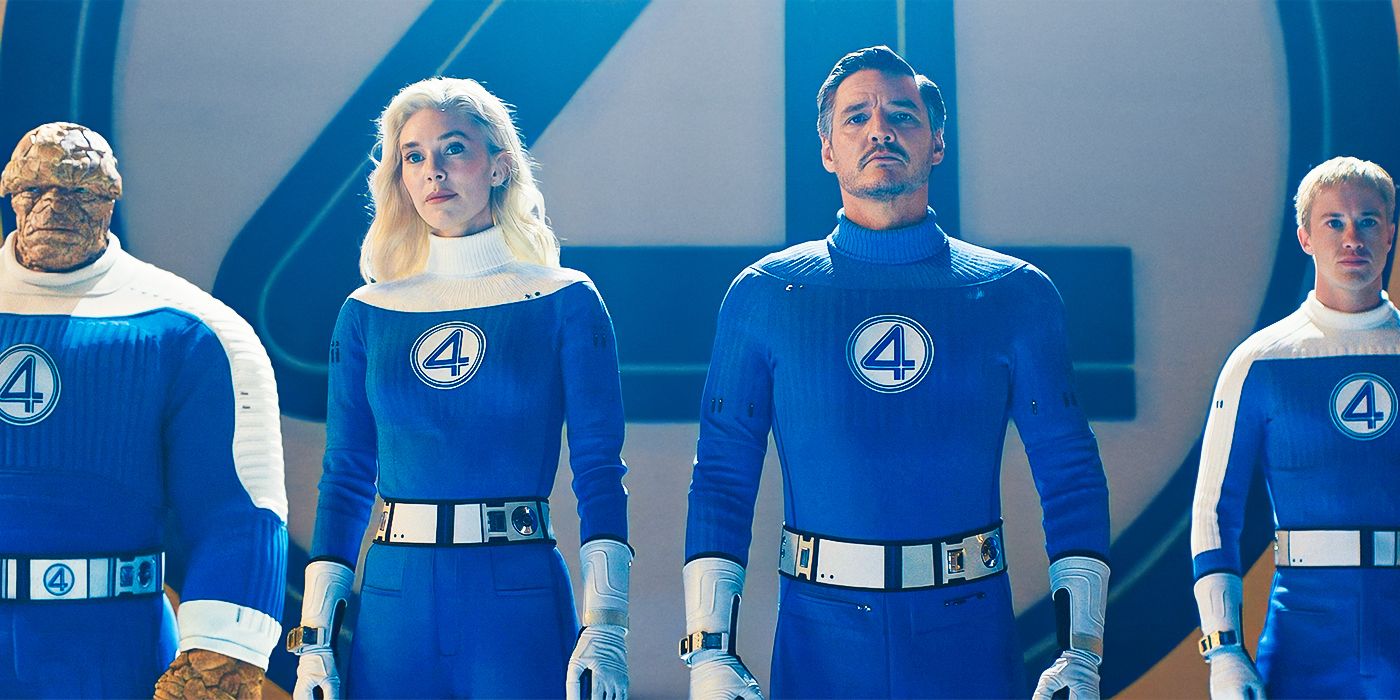
Related
‘Fantastic Four: First Steps’ Delivers an Unforgettable Final Trailer
Marvel’s first family comes to theaters on July 25.
How much of what audiences are going to see in less than a month, or about a month, are ideas you came up with?
WATTS: I don’t know exactly what happens. I haven’t seen it. I’ve seen the trailers, I’ve heard a couple of things, but I think it’s pretty close to what we had initially come up with in our story. Obviously, it evolves with time, but the main villain, the basic threat,
The alt-’60s.
WATTS: Yeah, the alt-’60s. The retrofuturism version of the Fantastic Four seemed so cool. So, I’m very happy that that stuff is there. It’s going to be a totally surreal experience for me to go and watch that movie.
Jon Watts Explains How He Became the Writer of Final Destination’s Highest-Rated Entry
Who knew that first date would lead to all this?
Have any of you seen the recent Final Destination? It’s the highest-grossing Final Destination, it’s the most well-reviewed of all of them, and I think you came up with the story.
WATTS: Yeah, I wrote the story for that one.
How did you get involved in that one? And when you were coming up with the story, how many of the kills did you come up with, and how much is it like you came up with the general story?
WATTS: I’m attached to that movie because an executive from New Line reached out to my wife, Dianne McGunigle, who’s a producer. They were asking her if she knew anyone who would be interested in working on a new Final Destination movie, and she was like, “Yeah. It was one of me and my husband’s first dates was to go to Final Destination.” I love Final Destination. I’ve always been a huge fan. Then, New Line asked me if I had any ideas, and I was like, “I think I could come up with an idea for a Final Destination movie.” It was just like writing fan fiction. I genuinely love those movies. I took a week and wrote up a treatment.
I don’t know how many of my original kills made it into the final movie because it sort of changed over time, but the idea that it starts with something in the past, and it ties into a family, and family secrets are revealed one by one, that was all my original treatment.
The movies have made crazy money. So, how much behind the scenes has everyone been talking, like, “Hey Jon, do you have another idea for a sequel to this?”
WATTS: Everywhere I am, I’m looking for Final Destination scenarios. It seems like there are a lot of things that could kill you.
It’s not even about the kills, though. It was a great idea, going to the past and having the interconnectivity of all those people that survived. That’s what I think elevated this movie. Not just the kills.
WATTS: People really liked that. That’s the downside of creating something that works really well. If you’re gonna do it again, you have to do better.
Are you working on the sequel to this film? Are you coming up with an idea?
WATTS: I feel like New Line probably definitely wants to make another one. I haven’t talked to anyone just yet about what it might be, but everyone had a really good experience on the last one, so I’d be surprised if we did not try to put our heads together and think of something.
I’m a little shocked you haven’t started yet because that movie is a very profitable movie for the studio.
46:13
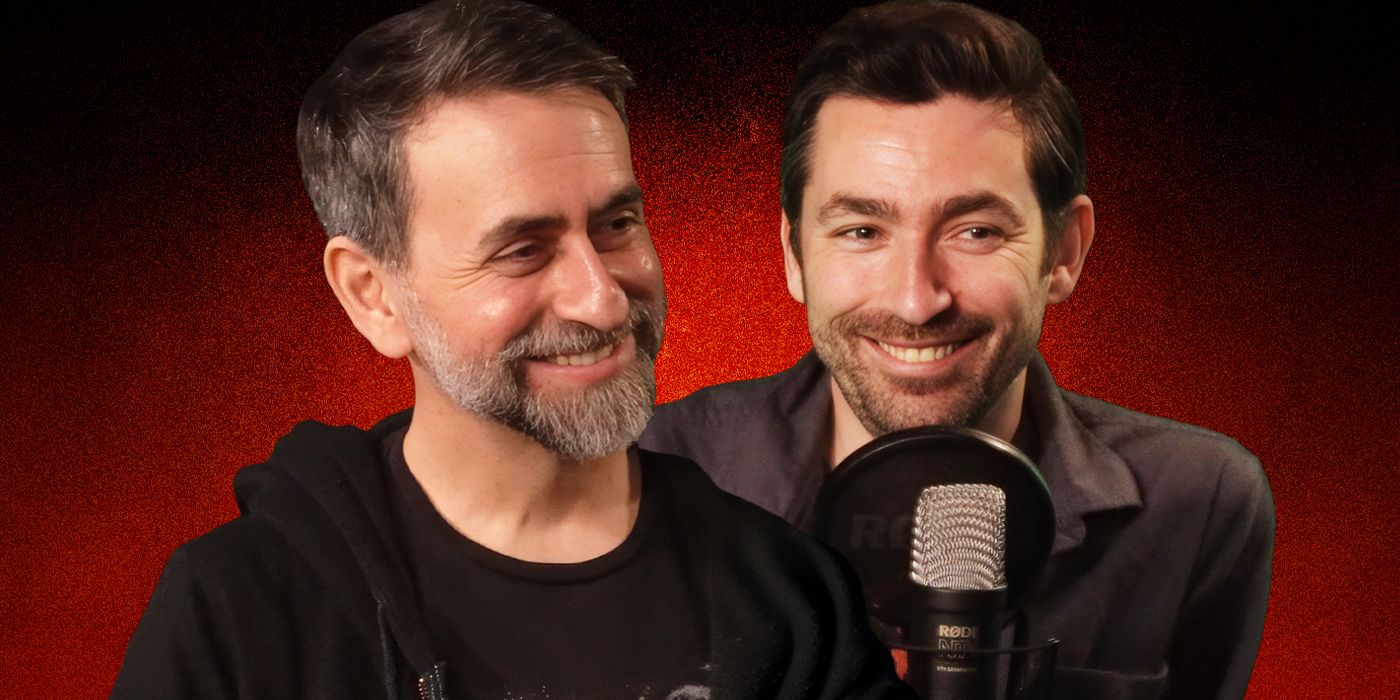
Related
Adam Stein and Zach Lipovsky discuss alternate death scenes, Tony Todd’s emotional farewell, rumored cameos, and the franchise’s future.
I don’t know if anyone has seen Wolfs, but it stars George Clooney and Brad Pitt, and Jon wrote and directed that. George Clooney and Brad Pitt are offered every script in town, literally. Brad Pitt is the number one person for scripts. So what is it actually like landing them. And when you were writing that movie, were you thinking about them in mind while you were writing? Talk about landing them for this movie.
WATTS: It’s about two fixers who are total lone wolves, who always work alone, who are forced to team up over a long winter night in New York. I had to pitch, and I pitched to each of them over Zoom, and they both really liked it and said, “Yeah, let’s do it.” It was as simple as that. That never happens. I don’t know, maybe they just wanted to hang out with each other.
How long between that Zoom session were you then filming with them?
WATTS: Pretty quickly. We were doing so many things at the same time. I think I wrote it in about six months while we were shooting Skeleton Crew, and then left Skeleton Crew before that finished to go shoot it. So, it happened really quickly.
What’s Up Next for the Spider-Man and Star Wars Director?
“I want to do it because I care about it, and because it would be something people would want to see.”
What are you working on right now? Are you working on multiple things besides Star Wars, because obviously you may be doing that. I’m just curious what you’re working on.
WATTS: You see what he does?
I’m what we call a professional. I’m pretty confident you are.
WATTS: Right now, I’m working on different projects. I’m writing some things, trying to come up with some new ideas. I think it’s really important if you’ve had some success with big IP to try and also create original ideas, so that you can keep people excited about going to the movies. I’ve also been helping other filmmakers get their projects together and trying to teach them some of the lessons that I have learned along the way, the things that I wish I had known at the beginning when I started.
You’re in a very unique position with the success of the films you’ve had and the people that you know, that you could, I would argue, come up with an original idea if it’s not a crazy budget. I’m sure someone would finance it. You’re in that very, very lucky position.
WATTS: Yeah. Just to get back to, I think this was billed as like a masterclass about storytelling [laughs], because it’s like I just have a rambling interview, I think it really, in the end, comes down to story. I like to try to help people figure out what is the story they feel like they can tell better than anyone else. That’s what I tell filmmakers. I say, “What is a movie that only you can make?”
Do you have a five-year plan or a 10-year plan? How much are you thinking about, “Well, I’ve done these genres, I’ve worked with these people. I would like to make a western or I would like to make a romantic comedy, or I would like to make a musical?”
WATTS: Oh, not at all. I probably should. I was thinking recently, “Should I be thinking more like that?” About being more targeted about what I want to do. But the reality for me is, I can’t make something unless I’m really, genuinely excited about it because it’s a lot of work, and it takes a long time. Sometimes it’ll be an idea that’s mine, sometimes it will be a script that someone else has written. I don’t want to do it just to do it. I want to do it because I care about it, and because it would be something people would want to see. So, I’m waiting for that spark.
